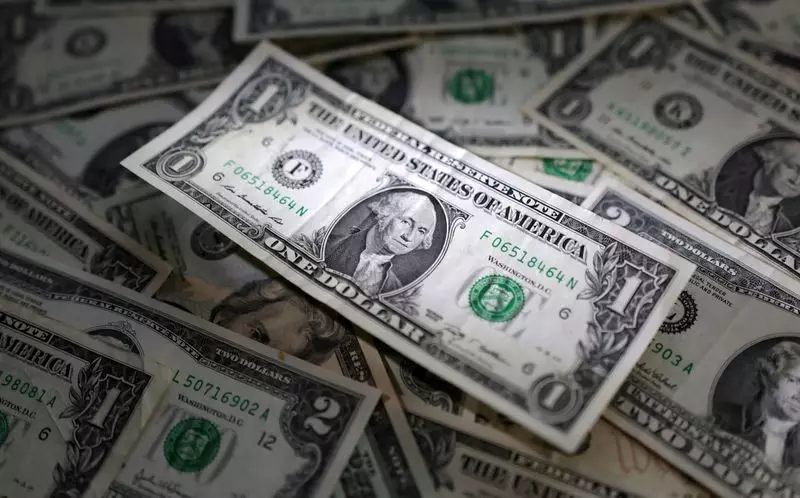The U.S. dollar, a benchmark for global currencies, has always seen its value fluctuate based on a myriad of factors, including economic indicators, political shifts, and market sentiment. In recent trading sessions, particularly on a Monday marked by investor anticipation, the dollar took a step backward after an extended period of gains. This development can largely be attributed to market reactions to President-elect Donald Trump’s recent choice of Scott Bessent as U.S. Treasury secretary, which seemed to momentarily soothe bond market anxieties and led to fluctuating yields that consequently diminished the dollar’s attractive rate advantage.
As noted by financial analysts, a key influence on the dollar’s valuation stems from the performance of U.S. Treasury yields. A decrease in the 10-year Treasury yield from 4.412% to 4.351% indicates a softening pressure, effectively eroding some of the dollar’s strength. Many anticipated that with a seasoned Wall Street figure like Bessent at the helm, bond market stability would ensue. Bessent, described as a fiscal conservative in favor of a robust dollar and supporter of tariffs, presents a complex picture that suggests that any weakening of the dollar might be short-lived. Market analysts—like Ray Attrill from NAB—express confusion at the notion that Bessent’s appointment might lead to a drop in the dollar, especially given his track record of advocating for dollar strength.
Recent fluctuations suggest that the dollar’s seemingly overextended climb might have reached a consolidation phase. Analysts noted that the dollar index recently slipped 0.5% to 106.950 after achieving a two-year peak of 108.090, indicative of a potential market correction. Moreover, the technical landscape surrounding these shifts reveals signs of overbought conditions, a phenomenon often followed by corrections in the currency market.
Moreover, the dollar’s interaction with other currencies paints a vivid picture of shifting strengths. Notably, against the Japanese yen, the dollar saw a 0.4% decline to 154.18, distancing itself from peaks near 156.76. Conversely, the euro displayed a slight rebound, gaining 0.7% to $1.0496—a welcome shift after nearing a two-year low of $1.0332. The dynamic interplay between these currencies is influenced by regional economic performance. European manufacturing surveys showcased broad weakness, contrasting sharply with stronger U.S. manufacturing data, which typically benefits entities holding significant dollar assets.
The currency market’s movements are further intertwined with expectations about monetary policies set forth by central banks. Recent assessments suggest that market participants are pricing in more aggressive easing from the European Central Bank (ECB), with a potential half-point rate cut now bearing a 59% probability for the upcoming December meeting. Meanwhile, the Federal Reserve’s anticipated actions appear less aggressive, with reduced odds for a quarter-point cut compared to previous months, marking a shift in market sentiment. The prospect of diverging monetary policies between the ECB and the Fed influences traders’ choices in the currency landscape significantly.
Compounding these shifts, economic data out of the U.K. showed disappointing retail sales figures, which led to increased expectations of a rate cut by the Bank of England (BoE) later in 2024. As a result, the British pound saw its own fluctuations, dipping to a six-week low before staging a minor recovery.
The Cryptocurrency Context
In parallel to traditional currency movements, the cryptocurrency market also demonstrated notable developments. Bitcoin, a central figure in the digital currency space, saw a modest retreat, dropping 1.2% to $98,208, primarily due to profit-taking behavior among traders. Having surged more than 40% since the U.S. election, Bitcoin’s performance suggests a strong correlation to market sentiment regarding regulatory environments, with traders hopeful that a Trump administration may ease cryptocurrency regulations.
The dollar’s recent retreat amidst political appointments and varying economic indicators underscores the inherent volatility within financial markets. As traders grapple with these complexities, the dollar’s immediate future remains uncertain but poised for potential rebounds, dependent on both domestic fiscal policies and global economic developments. The intricate weave of currency interactions, bond market behavior, and monetary policy outlooks will set the stage for what lies ahead in the ever-shifting landscape of global finance. Investors and analysts alike must remain vigilant as these factors continue to evolve, shaping the trajectory of both the dollar and other currencies in an interconnected economy.

